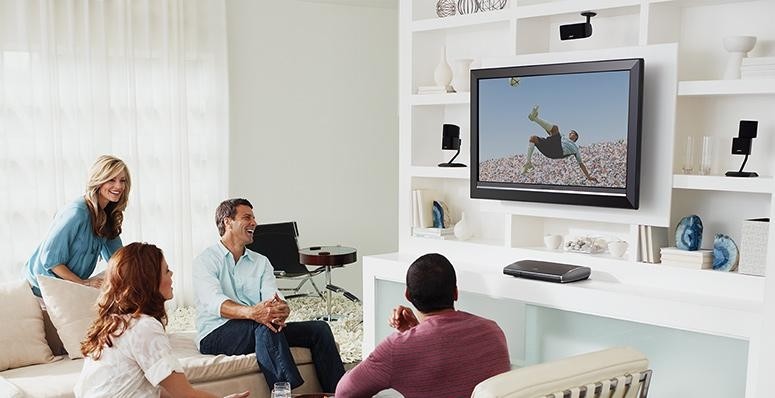 I remember the first time I discovered the wonders of HDMI. It was about seven years ago (six years after HDMI first surfaced!). I was testing out a new soundbar at the time, which came with an HDMI cable. I didn’t use it because I connected the soundbar to my TV using an optical cable.
I remember the first time I discovered the wonders of HDMI. It was about seven years ago (six years after HDMI first surfaced!). I was testing out a new soundbar at the time, which came with an HDMI cable. I didn’t use it because I connected the soundbar to my TV using an optical cable.
I noticed, however, that my laptop and my TV both had an HDMI port. On a whim, I connected them together—and was blown away.
My computer screen popped up on my TV. Almost instantly, the album I was listening to started playing through my TV’s speakers. “Wait a second,” I thought. “This thing is carrying video and audio?!”
It’s oftentimes the simple things that make the biggest difference. When it came to tech, HDMI was a simple thing that made—and continues to make—a huge difference.
What is HDMI
It stands for High-Definition Multimedia Interface. It’s a magical port that carries both audio and video; a digital replacement for analog connections.
According to hdmi.org, we’re now approaching “five billion units of HDMI-enabled products worldwide.” Woah, that’s means there are a ton of devices now using HDMI.
What devices use HDMI ports?
The better question might be what devices don’t use HDMI ports.
It is the standard for all HDTVs. When purchasing a new TV you’ll want to ensure it comes with as many HDMI ports as possible. Even if you don’t have many peripherals right now, there’s a good chance in years to come you’ll add to your setup.
You can always buy an HDMI Switch, like this one from Rocketfish, if you run out of HDMI ports or have an older TV that only has one or two ports.
If you’re mounting your TV, likeI recently did in my home with the help of Geek Squad, then you’ll definitely want to connect as many devices as you can before it goes up on the wall. It’s not impossible to add peripherals after the fact, especially if you have an articulating TV mount, but doing it at the beginning just makes it a bit easier.
Today, everything from soundbars to video game consoles to streaming devices to Blu-ray players to…well, pretty much everything else, has an HDMI port.
What makes HDMI so great?
Well, one cord is pretty darn convenient. There’s no need to have a separate audio and video cord creating more clutter anymore. You plug one HDMI cord in and you’re set. Forever.
Also, the quality is outstanding. It’s the only way to experience 1080p HD, since it can carry HD video and multichannel audio.
As well, if you’re getting into the Ultra HD 4K game then you’ll definitely need to utilize HDMI’s capabilities. The latest HDMI 2.0 supports 4K—2160p and up to 60 fps. That means you can view full-resolution 4K 3D and 2D content at higher frame rates, which will make a difference for your PC games.
If you haven’t already tested the HDMI waters, now is a great time to do so as the technology is reaching incredible new heights.
Main image from lifestylestore.com.au




That is great information @tpersaud .
As you may also be aware, HDMI format has undergone several “revisions” since its inception in 2002, the latest revision as you mention is HDMI version 2.0 for 4K/UHD and higher speed.
The most recent version for 1080P(non-4K TV’s) is HDMI version 1.4b, which included upgrades to issues such as lip-synchronization, deep colour issues, 3-D image etc..
I should also point out that the Rocketfish HDMI switcher is using an earlier HDMI version 1.3.
The differences in HDMI formats are as follows;
HDMI 1.0 to HDMI 1.2a uses the EIA/CEA-861-B video standard, HDMI 1.3 uses the CEA-861-D video standard, and HDMI 1.4 uses the CEA-861-E video standard.
Not to get too technical, but for those that are experiencing some issues with their audio or image quality, they may need to upgrade their HDMI connecting cable.
For my setup, my TV has five or six HDMI inputs, but I only use one. I have my soundbar connected to my TV via HDMI, and then my switch connected to the soundbar. The video signal is passed through the soundbar to the TV, and then because I have everything mounted on the wall, having the switch in my TV console means I have the flexibility of adding/removing devices with ease as required.
For the most part, HDMI is HDMI is HDMI. I am using cables from years and years ago, on a switch that I bought years and years ago, and have hooked up many different components from a blu-ray player to Wii U to Xbox One. I have had absolutely zero issues with picture/audio quality. I don’t buy into the hype that you need the latest version to have a good experience. That being said, I’m talking from a 1080p standpoint. My TV is 1080p and my cables are all from that era. I feel like I’m using cables mostly from the HDMI 1.0-1.2a era, and like I said, I have had no issues.
The other thing to keep in mind is that you don’t need an expensive HDMI cable to have a good experience. There have been numerous studies conducted over the years that have definitively shown that that $10 cable works just as well as the $100 cable. You won’t get any differences in video or audio quality. With any type of cable, either the signal passes or it doesn’t. There really isn’t anything in between. Save yourself some money.
JB
Comments are closed.